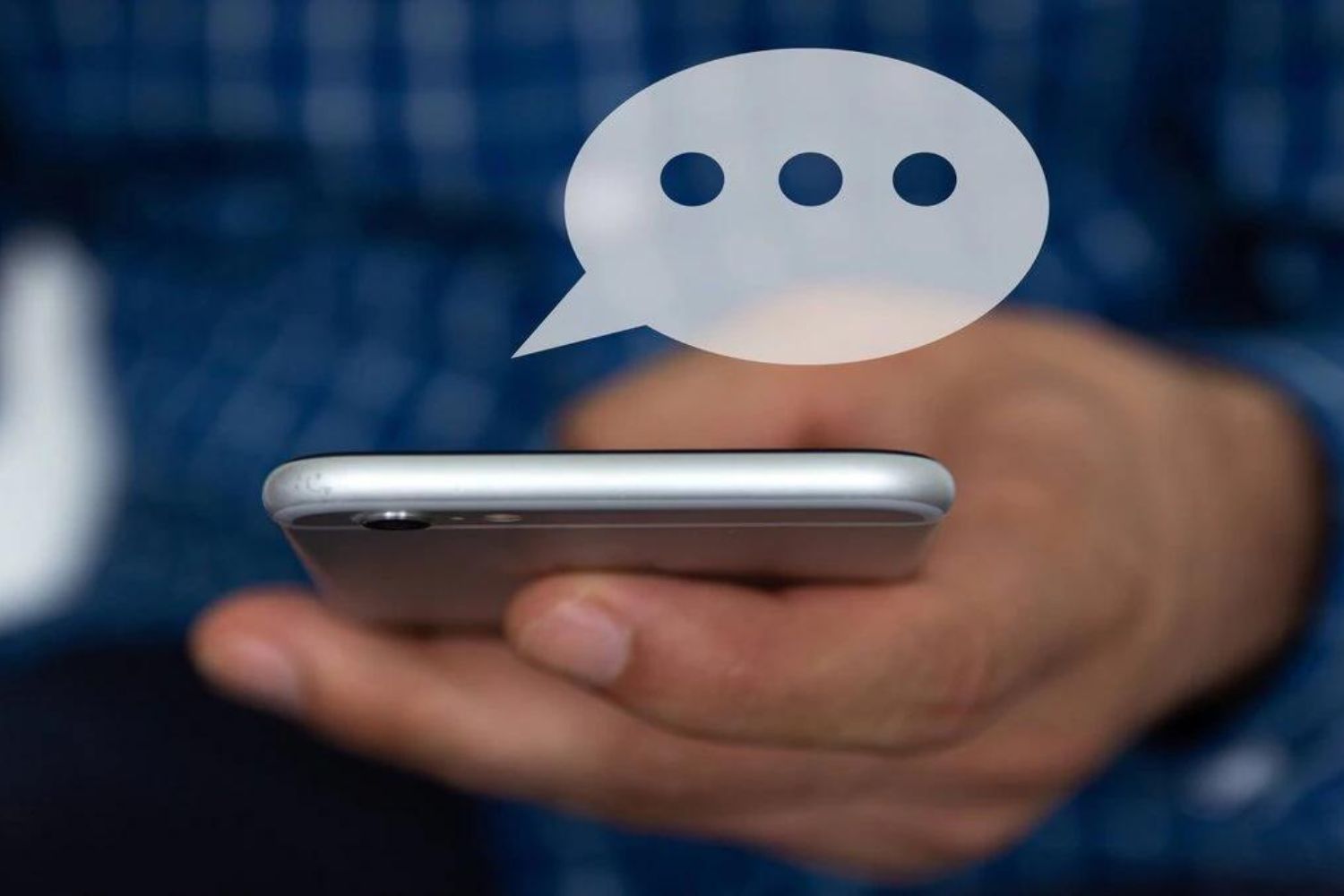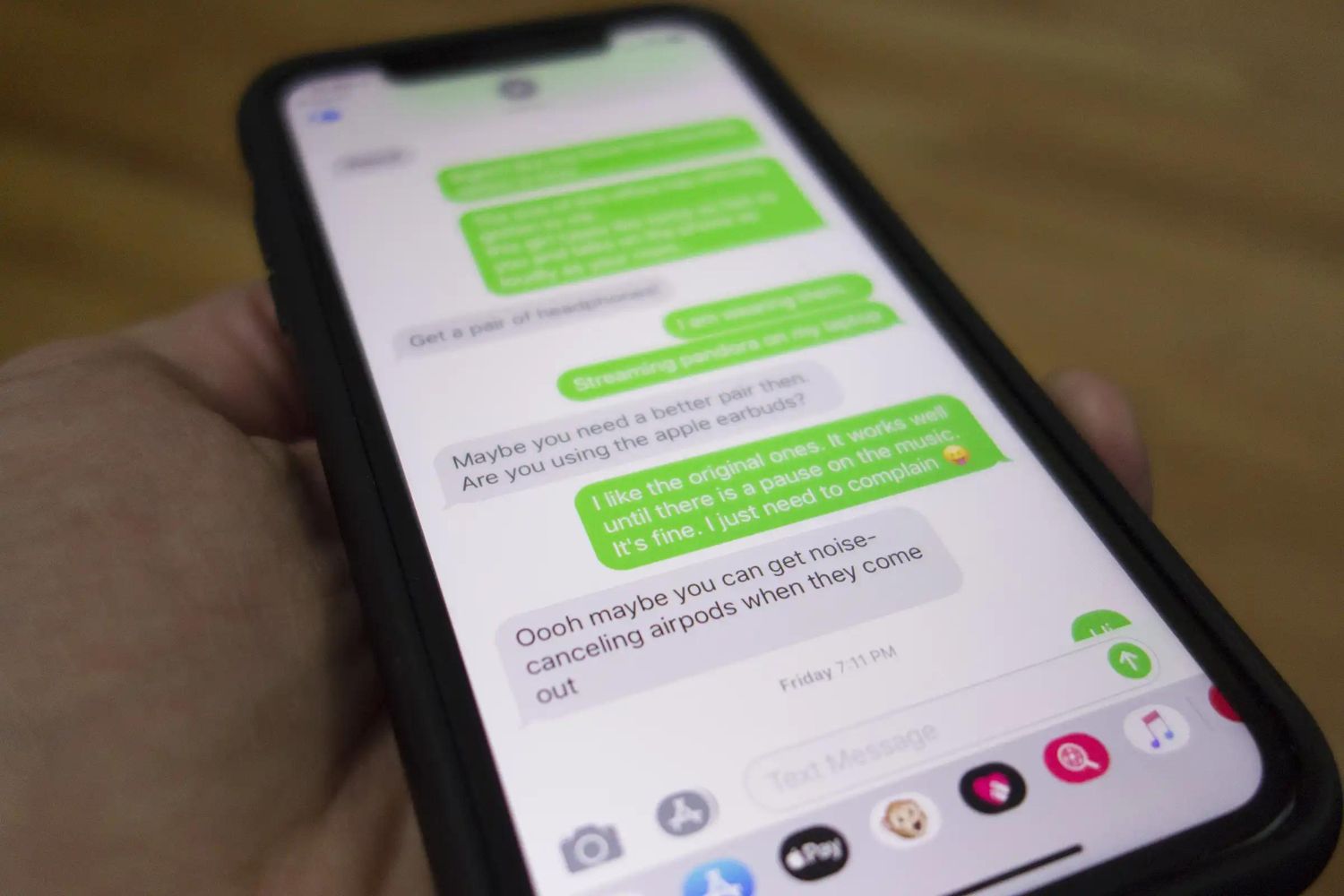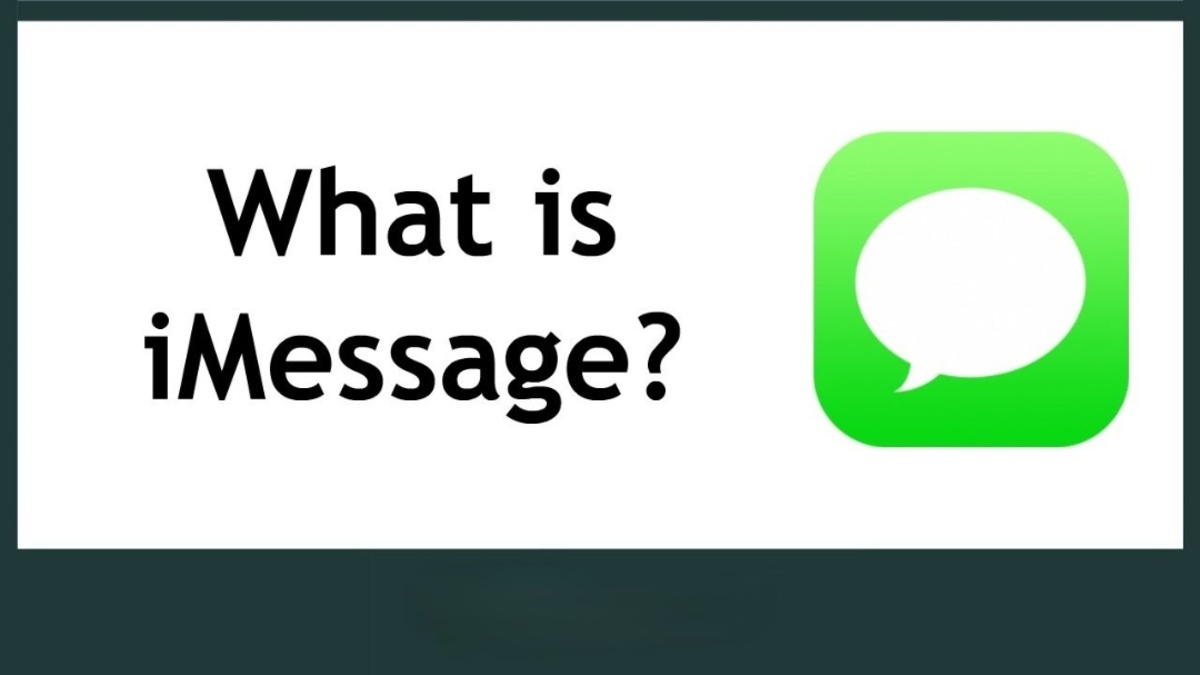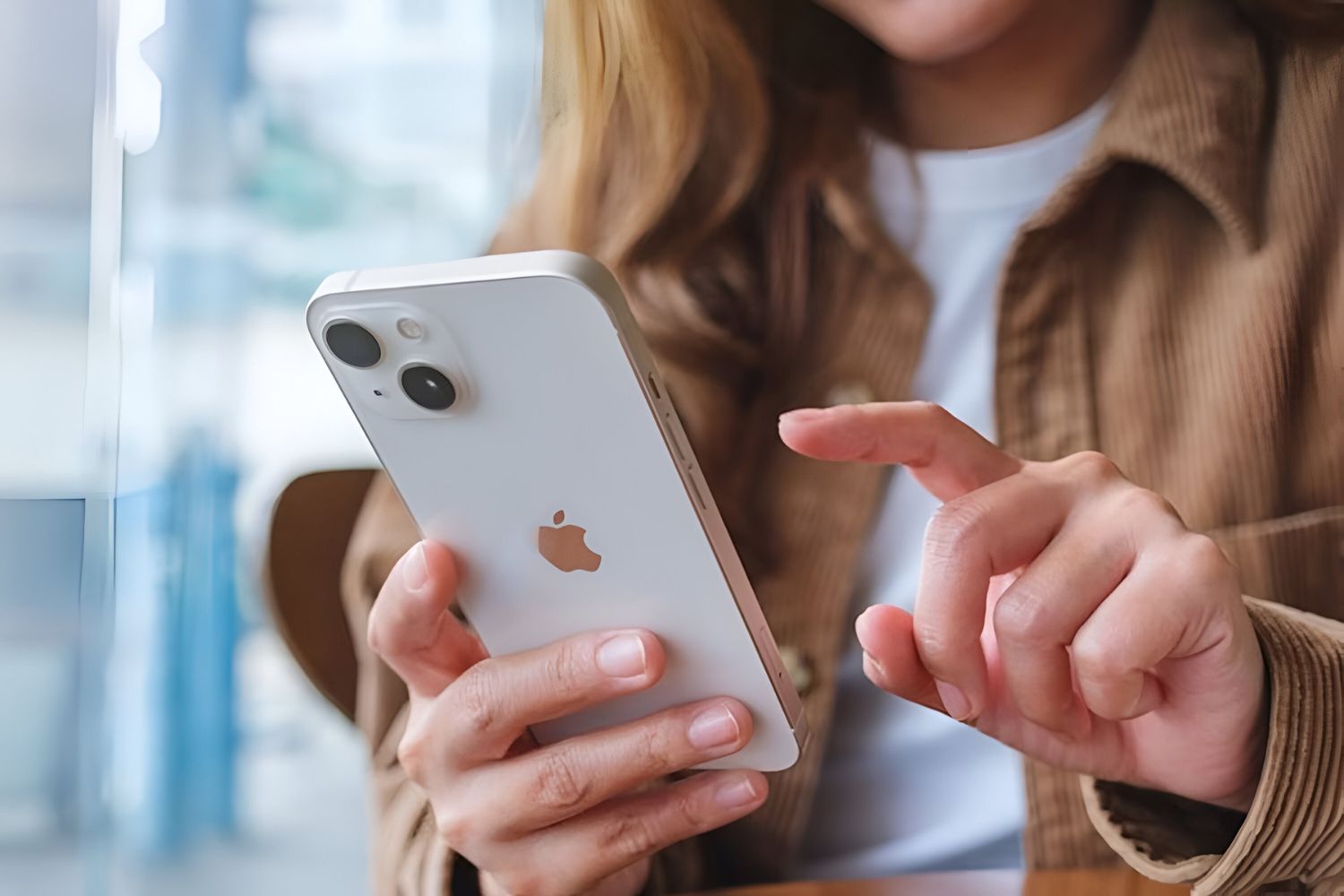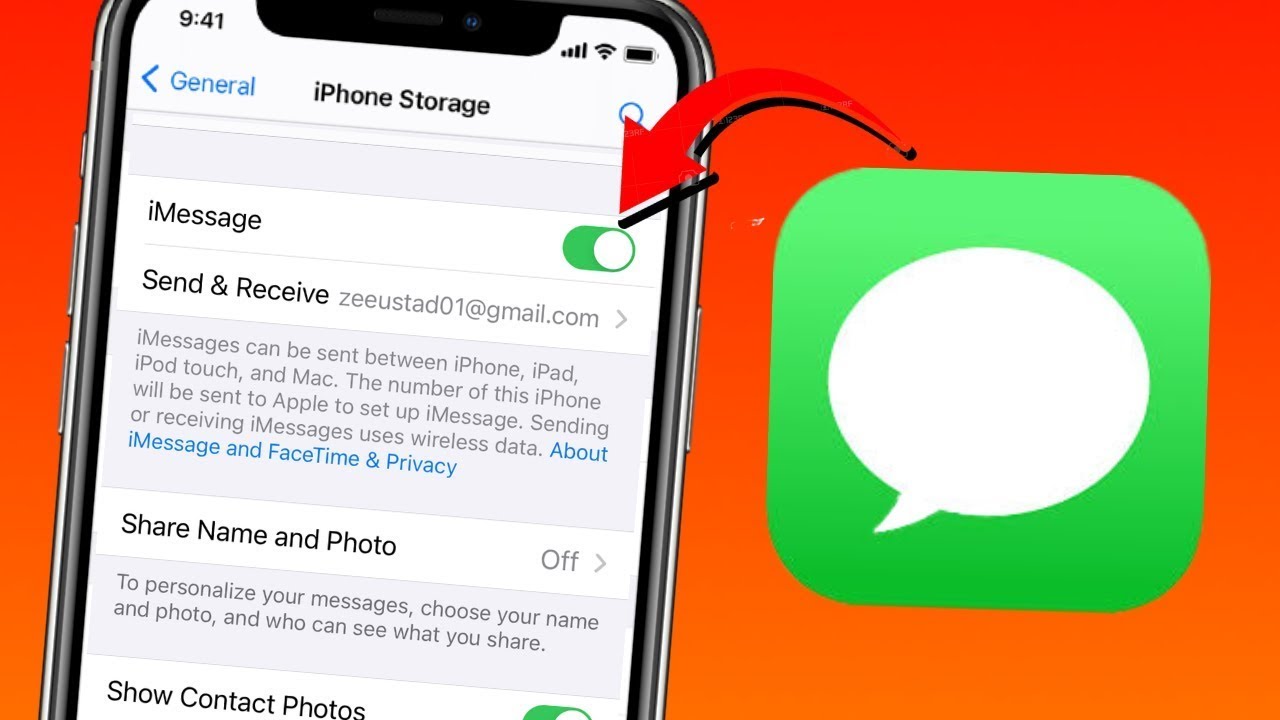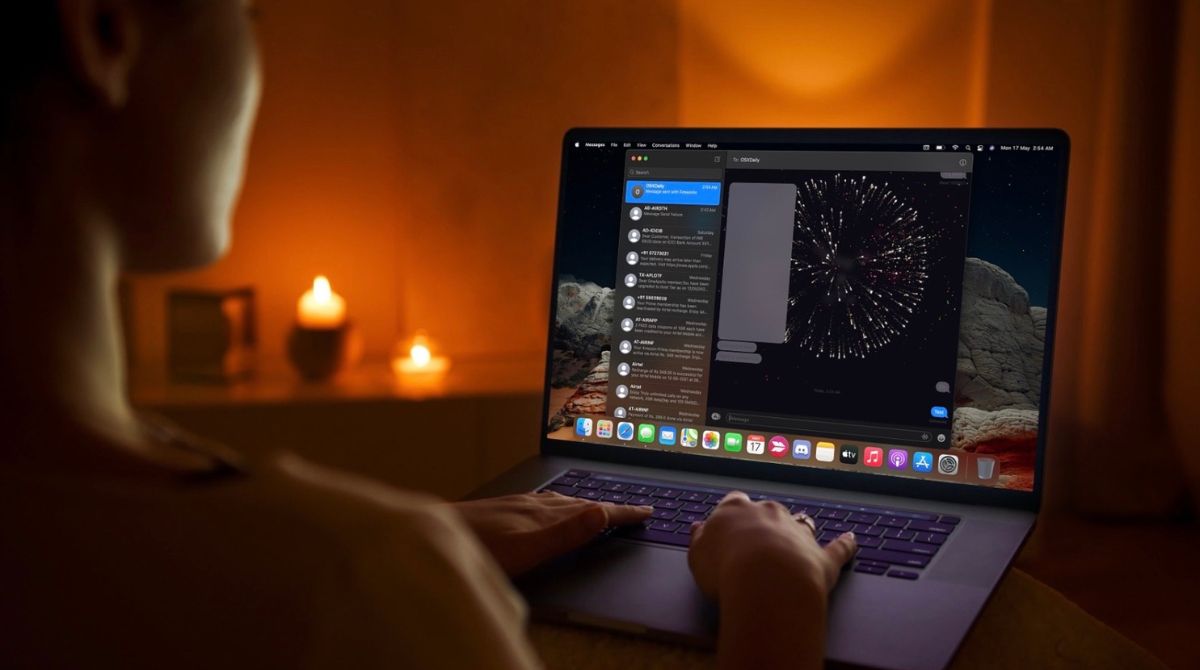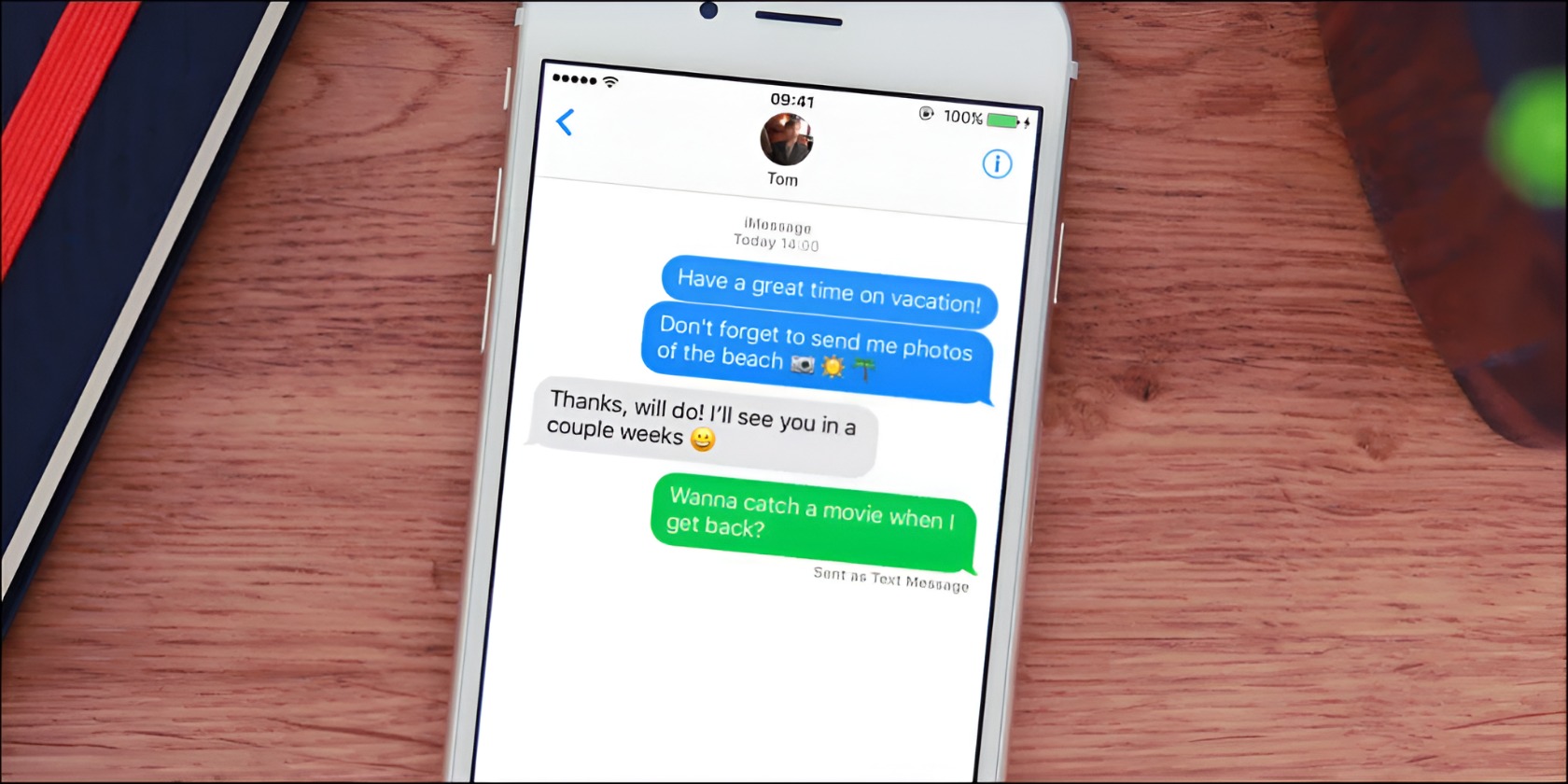Introduction
In today’s digital age, staying connected with friends, family, and colleagues has never been easier. With the advent of smartphones, we have a plethora of communication options at our fingertips. Two popular methods for exchanging messages are iMessage and text messaging. While both serve the purpose of sending text-based messages, there are significant differences between the two.
iMessage is an instant messaging service developed by Apple, exclusively available on their devices and operating systems. It offers a seamless and integrated messaging experience for iOS and macOS users. On the other hand, text messaging, also known as SMS (Short Message Service), is a communication protocol that allows for the exchange of text messages between mobile devices.
Understanding the differences between iMessage and text messaging is crucial for deciding which option suits your needs best. In this article, we will explore the features, pros, and cons of both messaging methods to help you make an informed decision.
iMessage
iMessage is a proprietary messaging service developed by Apple for iOS and macOS users. It allows users to send text messages, photos, videos, and more to fellow Apple device users seamlessly. Here are some key features of iMessage:
- End-to-End Encryption: iMessage ensures the security and privacy of your messages through end-to-end encryption. This means that only the sender and recipient can read the messages, keeping them protected from prying eyes.
- Rich Media Sharing: In addition to sending text messages, iMessage allows users to share a wide range of media, including photos, videos, GIFs, stickers, and even audio messages. This makes conversations more engaging and interactive.
- Read Receipts and Typing Indicators: With iMessage, you can see when your messages have been delivered and read by the recipient, indicated by the blue “Read” status. It also shows when the other person is typing, giving you real-time communication cues.
- Group Messaging: iMessage supports group messaging, allowing you to communicate with multiple contacts simultaneously. You can create group chats, name them, and even add or remove participants as needed.
- Seamless Integration with Apple Ecosystem: iMessage seamlessly integrates with other Apple services, such as iCloud and FaceTime. You can sync your messages across multiple devices and make audio or video calls directly from the messaging app.
iMessage offers a range of features that enhance the messaging experience for Apple device users. However, it’s important to note that iMessage is limited to Apple’s ecosystem, which means you can only communicate with other Apple users. If you’re messaging someone who doesn’t own an Apple device, the messages will be sent as regular SMS texts instead.
In the next section, we will explore text messaging and the key differences it has with iMessage.
Text Messaging
Text messaging, also known as SMS (Short Message Service), is a widely used communication method that allows for the exchange of text-based messages between mobile devices. Unlike iMessage, which is exclusive to Apple devices, text messaging is supported by all mobile phones, regardless of the operating system. Here are some key features of text messaging:
- Universal Compatibility: Text messaging is not limited to a specific brand or operating system. It works across all mobile devices, including smartphones and non-smartphones, making it accessible to a larger user base.
- Reliability: Unlike internet-based messaging services that require a stable internet connection, text messaging relies on the cellular network. This means that as long as you have signal coverage, you can send and receive text messages, even in areas with limited or no internet connectivity.
- Instant Delivery: Text messages are typically delivered instantly to the recipient’s device once sent. There’s no need to wait for an internet connection or rely on data services, making it a quick and reliable way to communicate.
- Standardized Communication: Since text messaging is based on a standardized protocol, messages sent between different mobile devices are compatible and can be received and read by any recipient, regardless of their device or service provider.
- Cost-Effective: Most mobile service plans include a certain number of text messages or offer unlimited texting options. This makes text messaging a cost-effective communication method, especially when compared to data-based messaging services that use mobile data or require internet access.
Text messaging has been an essential form of communication for years, enabling people to stay connected regardless of the type of phone they use. However, it lacks some of the advanced features and capabilities found in iMessage. For instance, text messaging doesn’t offer read receipts, typing indicators, or the ability to share rich media content like photos or videos.
In the next section, we will delve into the differences between iMessage and text messaging to help you understand which option might be more suitable for your needs.
Differences Between iMessage and Text Messaging
While both iMessage and text messaging serve the purpose of sending text-based messages, there are several key differences between the two. Let’s explore these differences:
- Platform Compatibility: iMessage is exclusive to Apple’s ecosystem, meaning it can only be used on iOS and macOS devices. In contrast, text messaging is universally supported by all mobile devices, regardless of the operating system.
- Security and Encryption: iMessage utilizes end-to-end encryption to ensure the privacy and security of messages. On the other hand, text messaging lacks this level of encryption, making it potentially more vulnerable to interception.
- Rich Media Sharing: iMessage allows for the sharing of various media types, including photos, videos, stickers, and GIFs. Text messaging, on the other hand, is limited to sending and receiving plain text messages. Multimedia content might be sent as MMS (Multimedia Messaging Service) messages, which may incur additional fees.
- Read Receipts and Typing Indicators: With iMessage, users can see when their messages have been delivered and read by the recipient. It also provides typing indicators, indicating when the other person is actively composing a response. Text messaging typically lacks these features, offering less visibility into message status.
- Group Messaging: iMessage supports group messaging, allowing users to create group chats and communicate with multiple contacts simultaneously. Text messaging also supports group messaging, but the user experience and features may vary depending on the device and service provider.
- Cost: iMessage uses an internet connection for message delivery, which may consume a portion of your data plan if you’re not connected to Wi-Fi. Text messaging, on the other hand, is usually included in mobile service plans or offers unlimited texting options, making it a more cost-effective option.
These differences highlight the distinct advantages and limitations of both iMessage and text messaging. Consider your communication needs, the devices you and your contacts use, and the features that matter most to you when choosing between the two.
Features of iMessage
iMessage, the instant messaging service developed by Apple, offers a range of features that enhance the messaging experience for iOS and macOS users. Let’s take a closer look at some of the key features of iMessage:
- End-to-End Encryption: iMessage prioritizes the security and privacy of user communication by employing end-to-end encryption. This means that only the sender and recipient can access the content of the messages, keeping them protected from unauthorized access.
- Rich Media Sharing: iMessage enables users to go beyond plain text messages and share a wide range of media. Whether it’s sending photos, videos, GIFs, stickers, or even audio messages, iMessage provides a platform for expressive and dynamic communication.
- Read Receipts and Typing Indicators: With iMessage, you can easily track the status of your messages. The service offers read receipts, indicating when your messages have been delivered and read by the recipient. Additionally, you can see typing indicators, which let you know when the other person is actively composing a response.
- Group Messaging: iMessage makes it simple to connect with multiple contacts simultaneously through group messaging. You can create group chats, name them, and even add or remove participants as needed. This feature facilitates seamless communication and collaboration with friends, family, or colleagues.
- Seamless Integration with Apple Ecosystem: iMessage seamlessly integrates with other Apple services, such as iCloud and FaceTime. Messages are synced across multiple Apple devices, ensuring that you can access your conversations from your iPhone, iPad, or Mac. Furthermore, you can make audio or video calls directly from the iMessage app, streamlining your communication experience.
These features contribute to the popularity and convenience of iMessage among Apple device users. However, it’s important to note that iMessage is limited to Apple’s ecosystem, meaning you can only communicate with other Apple users. When messaging someone who doesn’t have an Apple device, iMessage automatically reverts to sending text messages, known as SMS.
In the next section, we will explore the features of text messaging and compare them to those of iMessage.
Features of Text Messaging
Text messaging, also known as SMS (Short Message Service), offers a straightforward and efficient way to exchange text-based messages between mobile devices. While it may not have the advanced features of iMessage, text messaging still provides several key features that make it a widely used communication method. Here are some notable features of text messaging:
- Universal Compatibility: Unlike iMessage, which is limited to Apple devices, text messaging works universally across all mobile devices, regardless of the operating system or brand. This means that you can send and receive text messages to and from anyone with a mobile phone.
- Reliability: Text messaging relies on the cellular network to send and receive messages. As long as you have signal coverage, you can exchange text messages reliably, even in areas with limited or no internet connectivity.
- Instant Delivery: Text messages are typically delivered instantly to the recipient’s device once sent. This instant delivery ensures that your messages reach the intended recipient quickly and allows for swift communication.
- Standardized Communication: Text messaging is based on a standardized protocol, ensuring compatibility between different mobile devices and service providers. You can send a text message to anyone, regardless of which mobile network they are on.
- Cost-Effective: Most mobile service plans include a certain number of text messages or offer unlimited texting options. This makes text messaging a cost-effective means of communication, especially when compared to internet-based messaging services that rely on mobile data or require internet access.
While text messaging may lack some of the advanced features found in iMessage, such as rich media sharing or read receipts, its simplicity and widespread compatibility make it a reliable choice for staying connected with others. Whether you’re communicating with friends, family, or colleagues, text messaging provides a convenient and accessible method of exchanging text-based messages.
Now that we’ve explored the key features of both iMessage and text messaging, let’s delve into the pros and cons of each in the following sections.
Pros and Cons of iMessage
As with any messaging service, iMessage has its own set of advantages and disadvantages. Let’s take a closer look at the pros and cons of using iMessage:
Pros of iMessage:
- Seamless Integration: iMessage seamlessly integrates with the Apple ecosystem, allowing for synchronized messaging across multiple devices.
- Enhanced Security: iMessage utilizes end-to-end encryption, providing a high level of security and privacy for your messages.
- Rich Media Sharing: iMessage supports the sharing of various media types, including photos, videos, stickers, and GIFs, making conversations more expressive and engaging.
- Read Receipts: With iMessage, you can see when your messages have been delivered and read by the recipient, providing a higher level of communication visibility.
- Group Messaging: iMessage offers the convenience of group messaging, allowing you to communicate with multiple contacts in a single chat.
Cons of iMessage:
- Limited to Apple Devices: iMessage is exclusive to Apple’s ecosystem, meaning it can only be used by iOS and macOS users. This restricts communication with individuals who do not own Apple devices.
- Data Usage: iMessage requires an internet connection for message delivery, which may consume a portion of your data plan if you are not connected to Wi-Fi.
- Reliance on Apple Services: To fully utilize iMessage’s features, you need to have an Apple ID and be signed in to the iCloud and FaceTime services, which may limit compatibility with non-Apple services.
Considering these pros and cons can help you determine whether iMessage is the right messaging service for your needs. If you value seamless integration, enhanced security, and media-rich communication within the Apple ecosystem, iMessage may be the ideal choice for you. However, keep in mind the limitations associated with the exclusivity to Apple devices.
Next, let’s explore the pros and cons of text messaging to provide a comprehensive comparison between the two.
Pros and Cons of Text Messaging
Text messaging, also known as SMS, offers its own set of advantages and disadvantages as a communication method. Let’s examine the pros and cons of using text messaging:
Pros of Text Messaging:
- Universal Compatibility: Text messaging works with all mobile devices, regardless of the brand or operating system, ensuring that you can communicate with anyone who has a mobile phone.
- Reliability: Text messages rely on the cellular network, making them reliable even in areas with limited or no internet connectivity.
- Instant Delivery: Text messages are typically delivered instantly, ensuring that your messages reach the recipient quickly.
- Standardized Communication: Text messaging is based on a standardized protocol, allowing for compatibility between different devices and service providers.
- Cost-Effective: Text messaging is often included in mobile service plans or offers affordable unlimited texting options, making it a cost-effective means of communication.
Cons of Text Messaging:
- Lack of Advanced Features: Compared to iMessage, text messaging lacks advanced features such as read receipts, typing indicators, and rich media sharing.
- Limited Message Length: Text messages are typically limited in length, usually to 160 characters, which may require composing multiple messages for longer conversations.
- Character Encoding Limitations: Text messages may face limitations when sending certain characters, such as non-Latin characters, which may impact the readability and delivery of messages.
Text messaging is a widely accessible and reliable communication method that allows for instant and cost-effective messaging. It offers compatibility with all mobile devices and provides a standardized form of communication. However, it lacks the advanced features and media-rich capabilities of iMessage.
Consider these pros and cons to determine whether text messaging aligns with your communication needs. If you prioritize universal compatibility, reliability, and cost-effectiveness, text messaging may be the preferred option for you. However, keep in mind the limitations related to the lack of advanced features and media sharing.
Next, we will weigh the pros and cons to help you decide whether to use iMessage or text messaging in your daily communication.
Which One to Use: iMessage or Text Messaging?
Deciding whether to use iMessage or text messaging depends on various factors, including your device, communication preferences, and the devices your contacts use. Consider the following points when choosing between the two:
Use iMessage if:
- You and your contacts primarily use Apple devices, ensuring seamless compatibility and access to iMessage’s advanced features.
- Enhanced security and privacy are important to you, as iMessage offers end-to-end encryption for secure messaging.
- You enjoy sharing rich media content, such as photos, videos, stickers, and GIFs, to make your conversations more expressive and engaging.
- Features like read receipts, typing indicators, and synchronized messaging across multiple Apple devices are desirable for tracking message status and accessing conversations from different devices.
Use Text Messaging if:
- You need to communicate with contacts who use a variety of mobile devices and operating systems, as text messaging is universally compatible.
- You prioritize reliability, as text messaging relies on the cellular network and works even in areas with limited or no internet connectivity.
- Cost-effectiveness is important to you, as text messaging is often included in mobile service plans or offers affordable unlimited texting options.
- You prefer a standardized form of communication that focuses on the simplicity of exchanging text messages without the need for advanced features or media sharing.
Ultimately, the choice between iMessage and text messaging depends on your personal preferences, the devices you and your contacts use, and the features that matter most to you. You may also consider using both services, depending on the recipient and the context of the communication.
By carefully considering these factors, you can make an informed decision on whether to use iMessage or text messaging as your primary messaging method.
Conclusion
In the realm of messaging, both iMessage and text messaging offer unique advantages and cater to different needs. iMessage, with its seamless integration within the Apple ecosystem and advanced features like end-to-end encryption, rich media sharing, and synchronized messaging, provides a comprehensive messaging experience for iOS and macOS users. On the other hand, text messaging stands out with its universal compatibility, reliability, and cost-effectiveness, allowing for communication across all mobile devices.
When deciding between iMessage and text messaging, it’s important to consider factors such as device compatibility, security, media sharing capabilities, and communication preferences. If you and your contacts primarily use Apple devices and prioritize enhanced features like read receipts and rich media sharing, iMessage may be the preferred choice. However, if you seek universal compatibility, reliability, and cost-effectiveness, text messaging offers a reliable and straightforward communication method.
Ultimately, the decision boils down to personal preference and the specific needs of your communication requirements. It’s worth considering using both iMessage and text messaging, depending on the recipients and the context of your conversations. The ability to switch seamlessly between the two messaging methods offers versatility and ensures connectivity with a broader range of contacts.
Whether you choose iMessage or text messaging, both services facilitate instant and convenient communication, keeping you connected with your contacts and allowing you to share thoughts, information, and emotions effortlessly.







